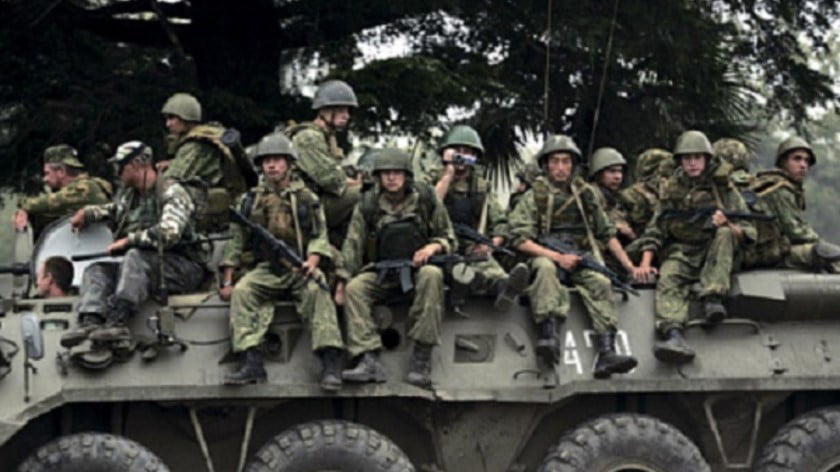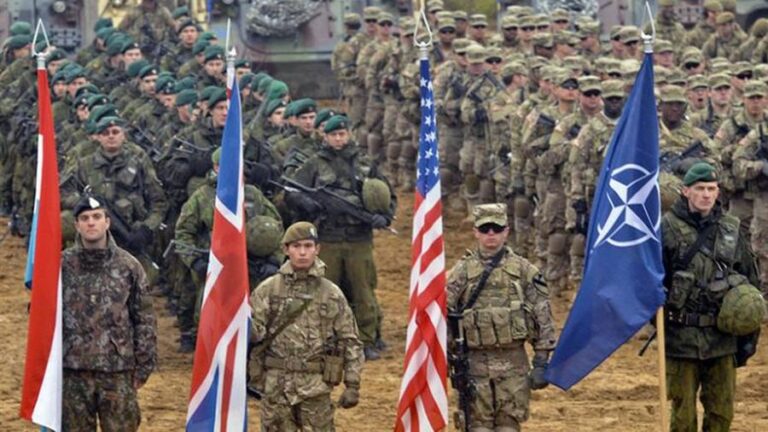The Decision to Go to War
An analysis of various wars and conflicts of the current century shows that the decisions of the military-political leadership of these states were made on the basis of geopolitical, political, military and technical goals, along with different tasks and phases of hostilities, but the main thing was to achieve a surprise attack.
Second Lebanese
The Israeli leadership designated the main military and political objective of the operation in Lebanon as the expulsion of Hezbollah forces from the Israeli-Lebanese border and the return of the abducted Corporal Shalit. The plan was also to: increase the deterrent effect on Hezbollah and neighbouring countries; seek to appease Lebanon through an effective monitoring mechanism, using the intervention of the international community, and keep Syria out of the campaign. The process and content of the war decision show that the Israeli operation in Lebanon was also beneficial to the personal political objectives of the President and Minister of Defence who never fought in a war, which was in violation of Israel’s political transition. The blitzkrieg, as Ehud Olmert and Amir Peretz hoped, could raise their profile and thus contribute to the sustainability of the current government.
The operation can be divided into phases.
The first phase: the blockade of Lebanon from the sea, air and land, the border fights of the Northern Military District of the IDF in southern Lebanon, lasted 11 days (July 12 to 22) and seemed to be in line with its stated objectives: to release its prisoners of war, as well as to fight against Hezbollah operatives, but not against Lebanon.
The second phase, air-sea, lasted for three weeks (July 22 to August 10). At that time, the IDF succeeded in pushing the militants out of southern Lebanon, but together with them, the mass exodus of the civilian population of Lebanon began. The Air Force and Navy subjected the entire Lebanese territory to massive missile strikes, the blockade of the air space and the seacoast continued, and raids by special forces and ground forces were carried out to clear southern Lebanon of Hezbollah structures. A group of three brigades (Golani, Nahal and parachute) was used for the sweep.
The third phase is a full-scale air-terrestrial operation conducted on the eve of the UN Security Council resolution on the ceasefire (August 11 to 14). Observers noted that the power of military operations in Lebanon at the time of adoption of the UN Security Council resolution has not decreased, but, on the contrary, increased dramatically. On the morning of August 12, IDF units launched an offensive on almost the entire front from the Mediterranean Sea to the Syrian border. Army activities were aimed at removing Hezbollah positions in southern Lebanon, the Bekaa Valley and clearing southern Lebanon, including Palestinian refugee camps along Israel’s northern border.
The fourth phase was the end of the air-sea blockade and the withdrawal of Israeli troops (August 12 to October 1), accompanied by ceasefire violations and joint strikes by the Israeli Air Force and Navy at Hezbollah positions. This episode of the war would have been better described as a partial truce, during which the Israeli army withdrew from Lebanese territory and handed over the liberated territory to the Lebanese army and UN peacekeepers.
Actions of the Russian General Staff in 2008
The parties to the Georgian-Ossetian conflict were preparing for a possible armed clash almost simultaneously and in an open manner. Russian Defence Minister Anatoly Serdyukov, ignoring the Security Council and the State Duma (which were just preparing the National Security Concept and the military doctrine), undoubtedly, not at his own risk, but with the prior verbal or possibly written consent of the leadership, began to resolutely reform the army on August 8, 2008. It is alarming that the start of the reform coincided with the day of the Georgian aggression.
It can be assumed that the Georgian intelligence was aware that by implementing the directive of Defence Minister Anatoly Serdyukov, the General Operations Directorate (GOD) and the General Staff’s Main Organisational and Mobilisation Directorate (GOMD) temporarily stopped using the means of communication that were at their disposal on Arbat while carrying out the reorganisation. It is impossible to think of a better time for Georgia’s attack on South Ossetia.
If our assumption is correct, the Georgian leadership was not waiting for the opening of the Beijing Olympics, but for the disruptions of the system of command and control of the troops of the Main Operational Directorate of the Defence Ministry of the Russian Federation. The warning system, which had been in operation for more than 60 years, was dismantled by a decision of the Deputy Minister of Defence for Communications. The situation on August 8 reminded us of the events of the summer of 1941. The reform initiated by Defence Minister Serdyukov caught the GOD and GOMD “with their pants down”. It is hard to imagine a greater shame for the General Staff, who constantly boasted of double and even triple redundancy of the management system. As a result, at the most critical moment of the Tskhinvali drama the General Staff, in particular, the GOD and the GOMD, almost lost control of the troops.
The main purpose of the Georgian operation “Clear Fields” was as follows: “Establishment of constitutional order” on the territory of South Ossetia and annexation of the territory belonging to the Shida-Kartli lands without changing the Constitution. It was also planned to establish “constitutional order” in Abkhazia and show the “perfidy of Russia” as a participant of the Georgian-Ossetian conflict.
Geopolitical goal: to reduce Russia’s influence on the states of the South Caucasus; to provide airfields for US and NATO airfields for possible military operations against Iraq. In turn, the political goal was to displace people from the territory of South Ossetia who refuse to be part of Georgia, to immediately begin negotiations on Georgia’s accession to NATO and to return Georgian refugees to Ossetia.
Military objective: to defeat the “separatist forces” of South Ossetia and at the same time neutralise the Russian peacekeeping forces, and then stop their movement through the Roki tunnel; to test the effectiveness of the US and NATO concept of combat operations in mountainous conditions. There was also a technical goal: to conduct large-scale tests in real-world combat conditions of modernised weapons; to practically test the “centres of fire planning” created with the help of the Israeli military.
The plan of the operation to seize South Ossetia was developed by the Pentagon 13 years previously and was first rolled out in the unrecognised republic of Serbian Krajina (RSK), which existed on the territory of present-day Croatia from 1991 to 1995. Thousands of civilians were killed in those events. Operation Clean Fields against South Ossetia was developed by Georgia together with employees of Military Professional Resources Incorporated (MPRI), the very one that, having signed a contract with the Saakashvili administration, has been engaged in all these years of preparing military operations and retraining Georgian military personnel.
The Georgian army was created exclusively for the offensive (blitzkrieg). All the exercises of the last years, “Fiery Fist”, “Armour”, had the objective of capturing South Ossetia and Abkhazia. The final training of the three Georgian brigades, conducted by the Deputy Defence Minister Batu Kutelia on April 24, 2008, was a rehearsal of the upcoming offensive. It was at that training session that it was planned to create six military groups to strike. The territory of South Ossetia was well suited for a blitzkrieg. The chances of success for Georgia were very high. The Dvaletsky Ridge separates South Ossetia from Russia. Delivery of weapons from Russia is possible only through the Roki tunnel. The military potential of Georgia and South Ossetia was incomparable – the Georgian army was well equipped (tanks, heavy artillery, MLCBs) and trained by American instructors, while the Ossetian armed forces were, in fact, a militia. In addition, the location of Tskhinvali, surrounded by Georgian-controlled heights, did not contribute to long-term defence.
Operation Clear Field was based on lessons learned from the Middle East wars of Israel and the experience of the Afghan and Iraqi wars. The plan for the military operation against South Ossetia was based on the simultaneous launching of two converging strikes against Tskhinvali. The main strike was planned to be made in the Gori direction, with a deep half-coverage of Tskhinvali from the east, in the direction of Avnevi-Khetagurovo, in order to cut through the defence of the South Ossetian army, with access to the Tamarasheni region. Another strike, from the Karelian direction, was from the northwest of Tshkinvali in the direction of Eredvi-Tliakan and with internal envelopment of the borders of Tskhinvali from all sides. The encircled Tskhinvali group was to be held back by air strikes and MLRS. The artillery strikes, according to the Georgian leadership’s plan, should have weakened it as much as possible, disorganised it and forced Tskhinvali to surrender.
In general, there were up to 15 thousand servicemen of the Ministry of Defence, up to 5 thousand servicemen of the Ministry of Internal Affairs and up to 30 thousand reservists in the South Ossetian line. The main bet in the Georgian army’s strategy against the South Ossetian and Russian armies was to achieve maximum fire in a short period of time. From 4 p.m. to 5 p.m., the artillery took up combat positions near the Tirdznisi village. It was planned that in 72 hours the Georgian army would seize Tskhinvali, Djava and the Roki tunnel. In four to five days it would take control of 75% of South Ossetia’s territory. Then the army would move to the Abkhazian direction, simultaneously land sea and airborne troops in the Gori district of Abkhazia and, building up its forces, would capture Skhumi by the end of the first day.
However, the political leadership did not agree with the military plans. The option of bypassing Tskhinvali was rejected and the military was required to plan an attack in the direction of Tskhinvali. This was the main strategic mistake of the Georgian president. Instead of moving towards Djava and the Roki tunnel, bypassing the resistance nodes, the Georgians became entangled in secondary settlements. A recurring story has been confirmed: when politicians intervene in the planning of a military operation, expect trouble. That’s what happened.
In turn, a detailed plan of attack on Abkhazia in Georgia was ready in 2004. Simultaneous actions were supposed to be taken from the Kodori and Gali directions, from the sea and through the mountains. The main strike was expected to be made where collective weapons could be used, tanks, artillery, naval forces. In one direction, it was planned to create a significant advantage, in the other, a small advantage, and in the third the opposing sides would have to engage in battle in approximately equal proportions of forces.
A powerful air strike was planned with the subsequent landing of the first echelon of 800-people-strong sea landing, then, the offensive operation along the coast. It was also supposed to strike with artillery and MLRS at the Abkhazian mountain battalion and Russian checkpoints. Then the Georgian group was to descend to Sikhumi.
The 3rd Brigade, base in Kutaisi, also moved to Sukhumi, and then the 2nd Brigade was to be deployed from Senaki. Both brigades were almost entirely staffed by Georgians living in Abkhazia. The operation to seize Abkhazia took 24 hours. It was supposed to involved up to 300 armoured vehicles and up to 200 artillery tubes. Diversion teams and SWAT had to destroy the entire command and control system. This was to be followed by the complete displacement of the inhabitants from all settlements.
Intervention in Lybia
The US Joint Command Africa Command headquarters led by General Carter Ham conducted the planning for the Libya counter-insurgency operation. Officers from the United Kingdom, France and other coalition countries were deployed to the operation’s headquarters to coordinate joint operations. Subsequently, the planning of the operation was transferred to the NATO command. The main task, apparently, was not to block the Libyan airspace, or destroy or defeat the Libyan armed forces, as in the course of the operation in Yugoslavia and Iraq, but to destroy the top leadership of Libya. The operation was designed to support the implementation of UNSCRs 1970 and 1973 on humanitarian assistance and the protection of civilians in Libya. In fact, the US and NATO during Operation Odyssey Dawn conducted four operations in the Mediterranean Sea: Great Britain, “Ellami”, France, “Harmattan”, Canada, “Mobile”, and NATO, “Allied Defender”.
The EU leadership had approved a plan to allow the EU to conduct a military operation to provide humanitarian assistance to the Libyan population. A fifth operation, EUFOR Libya, was added to the four NATO operations. It was envisaged that the EU, if requested by the UN Office for the Coordination of Humanitarian Affairs, would “conduct a military operation within the framework of the Common Security and Defence Policy (EU) in order to support the provision of humanitarian assistance in the region”. In particular, EUFOR Libya was to facilitate the security and evacuation of displaced persons, as well as to support humanitarian agencies through “certain capabilities”. The operation was designed to support the implementation of UNSCRs 1970 and 1973 on humanitarian assistance and the protection of civilians in Libya. Italian Rear Admiral Claudio Gaudiosi commanded the operation, and the operation command headquarters was in Rome. The operation was carried out throughout Libya up to the southern borders with the Sudan, Chad and the Niger. The EU troops also monitored the areas bordering Egypt, Tunisia and Algeria.
The main coalition bases were located in five countries: France, Greece, Italy, Spain and the United Kingdom. The deployment of US 2nd and 6th Fleet ships in the Libyan adjacent area made it relatively easy to stop Libya’s surface ships from sailing in the open sea. The largest and most powerful group of forces and resources were allocated by the United States. As of March 19, it was represented by 42 F-15C Block 50, F-15E and F-16E fighters. The US aviation group also included RC-135, EC-130Y, EC-130J and EA-18G electronic warfare aircraft, EP-3E electronic surveillance aircraft, R-3 “Orion” basic patrol aircraft and KC-135R and KC-10A refuelling aircraft. The US Navy was represented by: the Florida nuclear submarine with cruise missiles, two Los Angeles-class nuclear submarines (SSNs), two Arley Burke-class destroyers, the Mount Whitney control ship, the Kearsarge amphibious assault ship, and the Austin dock transporter. Many American warships carried Tomahawk cruise missiles.
The British group consisted of GR.4 Tornado fighter-bombers (20), the latest Eurofighter Typhoon fighters (10), E-3D and Sentinel R.1-class aircraft, Nimrod R.1-class reconnaissance aircraft and VC-10-class refuelling aircraft. The British submarine Triumph-class Trafalgar, equipped with the Tomahawk cruise missiles and two frigates were in the Mediterranean Sea.
France had allocated its latest Rafale fighters (8), as well as Mirage 2000-5 (2) and Mirage 2000D (2), E-3F AWACS and C-160 Transall fighters for military operations against Libya. The Charles de Gaulle aircraft carrier was sent to the shores of Libya, carrying eight Rafale-M fighters and 12 Super Étendard attack aircraft, two E-2C AWACS Hawkeye aircraft, and Eu-275 and SA-330 helicopters. The French Navy Command had also allocated two frigates to participate in the Libyan operation. From the Italian Navy, the command used the light aircraft carrier Giuseppe-Garibaldi with AV-8V Harrier II attack aircraft on board, two destroyers of the Andrea Doria-class and the landing ship San Giorgio. Norway had deployed six F-16 fighters in the area of operations, Denmark four F-16 fighters, and Qatar four Mirage 2000-5 fighters. The Qatari planes arrived in the area of Operation Odyssey Dawn on March 22. NATO saw their presence as a demonstration of the “Arab flag” in the Libyan campaign.
Ukrainian civil war
The main purpose of the operation conducted by the Ukrainian politico-military leadership was as follows: “Establishment of constitutional order” in Luhansk and Dontesk.
Geopolitical goal: to reduce Russia’s influence on the Ukraine and the EU; to deploy a missile defence system for the US and NATO and to create a brigade (Polish-Ukrainian-Lithuanian) jointly with NATO. Political goal: to expel the Russian population that does not want to speak Ukrainian; to actually begin the resettlement of Ukrainian families from the West of the Ukraine to the lands of Donbas. There were other goals: to abandon cooperation of Ukrainian regions with Russia; “Energoatom” of the Ukraine will back out from [a contract signed with] the Russian Fuel Company and sign a contract on nuclear fuel supply for its nuclear power plants with the American company Westinghouse, etc.
The military purpose of the operation was to defeat the “separatist forces” of Donbas, and then to close the border with Russia; to test the NATO concept and the American experience of counterinsurgency fighting techniques from Afghanistan and Iraq on the Ukrainian territory; to test the practice used by the US Air Force in Iraq and Afghanistan (variations of the US “kill-boxes”). The military-technical goal of the operation was to organise the production of new equipment and weapons at Ukrainian enterprises in a short period of time; to abandon the military technical cooperation; de facto start the military technical cooperation with NATO countries. Finally, there was also a religious purpose for the operation.
The General Staff of the Ukrainian Armed Forces together with American advisers and in line with the vision of the then Secretary of National Security and Defence Council of Ukraine Andrey Paruby developed the operation against Donbas. The operation was based on lessons learned and experience from the Afghan and Iraqi wars. The desire of Ukrainian troops in June-July 2014 to take Donbas and Luhansk into huge pincers along the Russian-Ukrainian border was linked with the desire to interrupt the supply of militias from Russia and to allocate the necessary efforts for the internal circle of repudiation.
However, the political leadership did not agree with the military and needed a quick result; the closure of the state border with Russia. A recurrent story has been confirmed: when politicians intervene in the planning of a military operation, expect trouble. That’s what happened. It resulted in a double encirclement of Ukrainian troops along the borders with Russia and the formation of the so-called Southern Cauldron near Amvrosiivka. Thus, in the summer of 2014 the Ukrainians repeated the Georgians’ mistake of August 2008, when the military expediency of bypassing Tskhinvali and the rapid breakthrough of Georgian troops to the north with the aim of blocking the Roki tunnel was sacrificed to political considerations and the desire of Mikheil Saakashvili to hoist the Georgian flag in the centre of the capital of South Ossetia faster.
War in Syria
Russia has been considering the possibility of intervening in the Syrian conflict at least since 2013, when it first proposed replacing Austrian peacekeepers in the Golan Heights with Russian ones. Since 2013, Moscow has played a significant role in the seizure of chemical weapons from Syria, and at the same time the first serious negotiations with Damascus began on the issue of combating radical Islamists. In parallel, Russia conducted a strategic military dialogue with Iraq, which resulted in the signing of 4.2 billion dollars arms deal with Baghdad in 2012 and the delivery of Su-25 aircraft in 2014. In July 2015, the Russian Federation agreed with Iran to participate in Syria’s fight against terrorists. Since then, the question has been not “if” but “when” and “how”. And the Ukrainian crisis did not change Moscow’s plans, but only delayed their implementation.
Immediately prior to the start of the Russian operation in Baghdad, a quadripartite coordination centre was established in charge of collecting and analysing current military information, and even apparently joint operational planning. The Russian Aerospace Forces campaign in Syria was unprecedented both in terms of scale and technical implementation methods. For the first time in more than half a century, we are dealing with a combined (naval and airborne) projection of Russian military power thousands of kilometres away from our borders. This demonstration has strategic value. In fact, the General Staff of the Russian Armed Forces secretly repeated the “Anadyr” operation of the Soviet General Staff to regroup missile launchers into Cuba during the Caribbean crisis. And this is in the face of active interference, powerful space, airborne radio reconnaissance, bearing from the US, NATO and Israel.
Main conclusions
As a result of the Second Lebanon War, it is possible to conclude that the concentration of a disproportionate number of specialists of one war specialty in the top leadership of the army be excluded. On the eve of the war in Lebanon, pilots occupied most of the key positions. During the tenure of Minister of Defence Pavel Grachev, paratroopers dominated the leadership of the army, and the roll was made in favour of the preparation of landing units and formations. Under the first CIS Defence Minister, Air Marshal Evgeny Shaposhnikov focused his efforts mainly on the development of aviation and air defence. Marshal Igor Sergeev considered the Strategic Missile Forces a priority. Until 2006, the leadership of the Russian Armed Forces had a disproportionate number of spies and counterintelligence officers, so the emphasis was on combating subversive and terrorist threats. Under Anatoly Serdyukov, the financial tax authorities played the main role, which is why the army reforms were not calculated and verified.
When analysing the Georgian army’s combat operations, the Russian Defence Ministry drew surprising conclusions: the five-day war with Georgia showed that large tank formation were slow and difficult to control. At the same time, they also referred to the war in Yugoslavia, where the tanks were practically idle, forgetting that there was a special war, an elementary shooting of the enemy from the air. The transition from a four-tier command and control system (regiment-division-army-circle) to a three-tier command and control system (brigade-grouping of troops-circle) was an unjustified and generally erroneous decision.
The main lessons of the Libyan campaign for the construction of the Russian Armed Forces: requires a radical revision of the theory of the use of modern air force, fleet and forces of special, information-psychological, cyber operations in future armed conflicts; one should take into account the opinion of Western experts that the combined use of the air force and a limited contingent of special forces will be the basis for conducting military operations in the next 10 years.
It should be especially noted that, taking into account the results of the wars and conflicts considered, it is apparently necessary to create special organisational, managerial and analytical structures in the Russian army to counteract information aggression.
By Anatoly Tsyganok
Source: nvo.ng.ru via South Front







